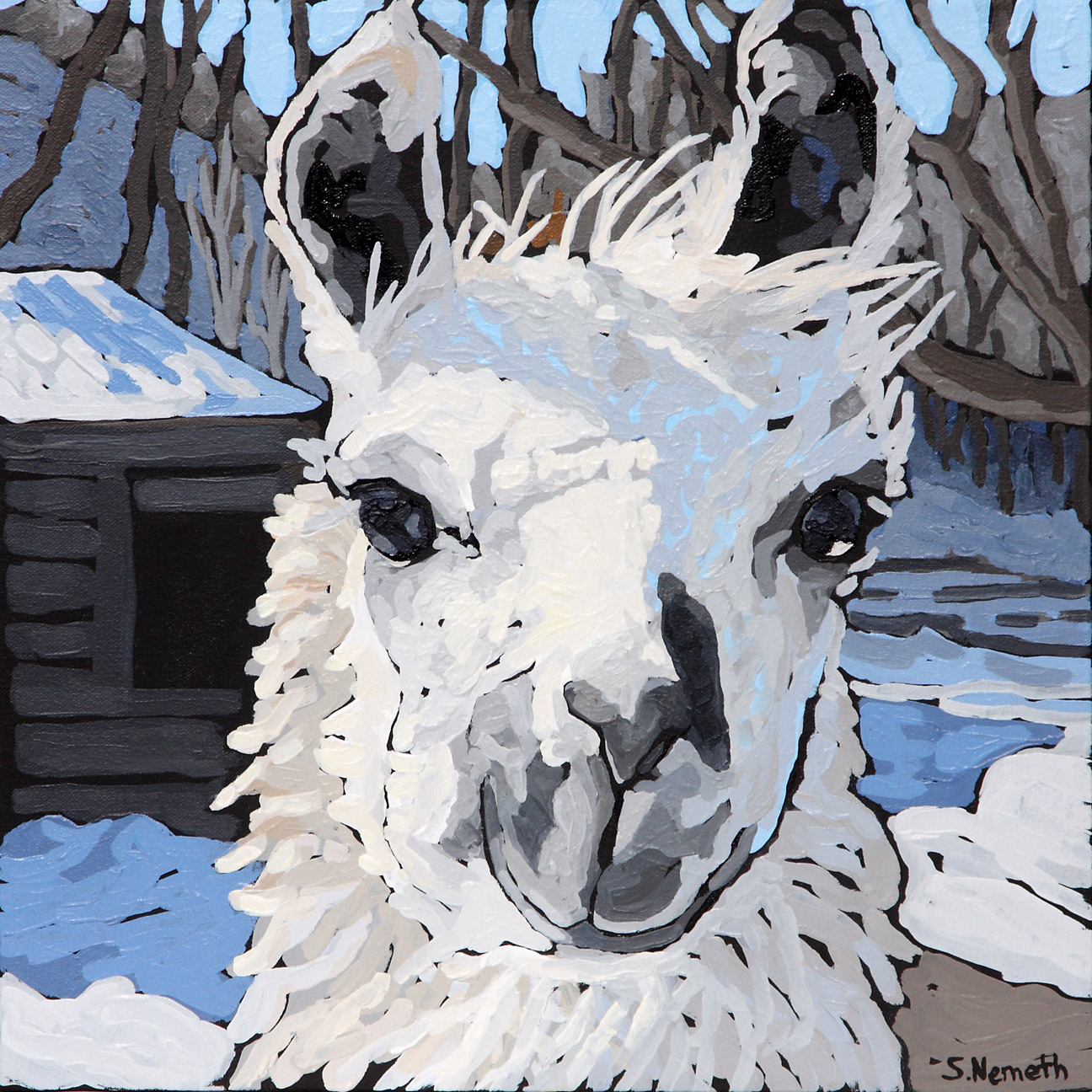
Story based on a conversation with Sandy, a High Park Zookeeper
“When Honey was born, High Park Zoo was in a fight for it’s life. The City of Toronto had cut funding for the zoo and it was at imminent risk of shutting down.
‘Friends of High Park Zoo’ was formed and they began to raise funds to keep the zoo running. The Honey Family Foundation agreed to match all community donations for the next three years. The llama, Honey, was named after these generous donors, and became the poster child in the fight to save the zoo.
Luna was Honey’s first born baby. When Luna was born she was also in a fight for survival, only she was fighting for her own life.
On Sept 9, 2015, I received a call from 311. “There was something going on in the llama pen, an animal or something, it might be dead.” I went there right away. I almost didn’t see the whitish little lump near the feeder. None of the other llamas were near her and she was unresponsive. I thought to myself ‘this isn’t good’. I picked her up and began to dry her off and shake her and eventually got a little sigh out of her. She was alive but very weak. I brought her and her mother indoors to a stall and encouraged her to nurse. It’s crucial that new-borns get some milk within a couple of hours of being born. She wasn’t able to nurse, and I couldn’t milk the mother very well, so I mixed up a bottle of powdered colostrum and fed the baby. We continued feeding her this way for a few days, then she took a turn for the worse. We had to take her away from her mom and bring her to the vet.
She stayed at the vet for a week before she was well enough to return home. While at the vet, she developed a problem with her neck. It became very crooked with her head leaning to the right. We were told that she needed physical therapy several times per day. Back at the zoo we massaged her neck and encouraged her to use her neck muscles. At that point she couldn’t even walk well. She kept veering off to the right and crashing in to things. Because she was so vulnerable we kept her in her own separate pen, away from the other llamas. We kept working and working. One day I sat with Luna in her pen and cried because she’d been through so much.
Eventually she started to improve. We came to believe that her only hope for a full recovery was put her back in the llama pen where she would need to keep her body moving, to look in all directions. She had a little brother who was an in-your-face kind of guy, and that alone we thought would keep her moving. So that’s what we did. During the day we brought her to the llama pen, and at night we brought her back to her own pen. And then she got better rapidly. Within a couple of days your average person looking wouldn’t have noticed anything.
The vet thought for sure she wouldn’t be able to start nursing at that point. It had been six weeks since her birth at that point. But she did. She resumed nursing.
All babies are special. But Honey’s baby was perhaps more special than most. We pulled out all the stops for her. And she’s such a sweetheart. She loves us, and she’s bonded with the llamas. We can come down here and call her and she’ll come running. She’s our baby and we love her.”
